A delicious and simple one pot pasta with a parma rosa sauce from scratch. This comes together quickly with fresh ingredients and minimal effort – the pasta cooks in the same pot as the sauce! Everyone loves a creamy tomato pasta sauce, so this is an easy win for dinner time.
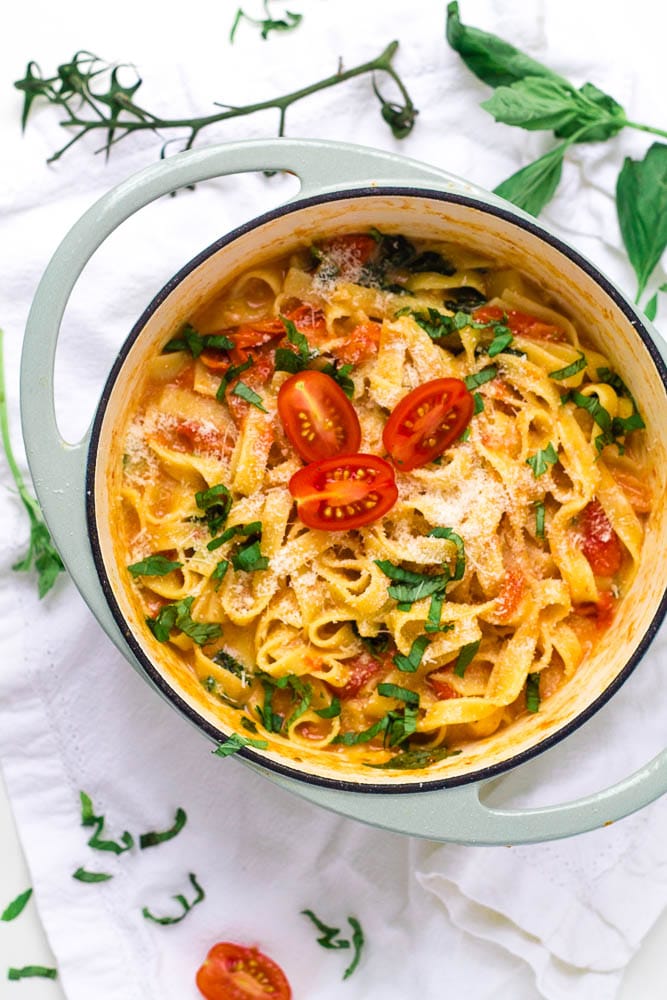
We are going super simple and basic today with this parma rosa pasta recipe. It’s nothing revolutionary, but it’s a nice one to have up your sleeve.
I’ve got a few other one pot pasta recipes (where the pasta cooks in the same pan as the sauce) on this blog, but so far they’ve all used canned tomatoes. Lately I was tempted to try the concept with fresh tomatoes instead, and that turned into this parma rosa sauce version.
I always wondered if this would be weird and watery with fresh tomatoes, but I am here to say nope. It is not weird or watery, it actually works really well if you have some decent quality tomatoes. The tomatoes leach their juices into the pan and that helps cook the pasta.
It’s rather brilliant.
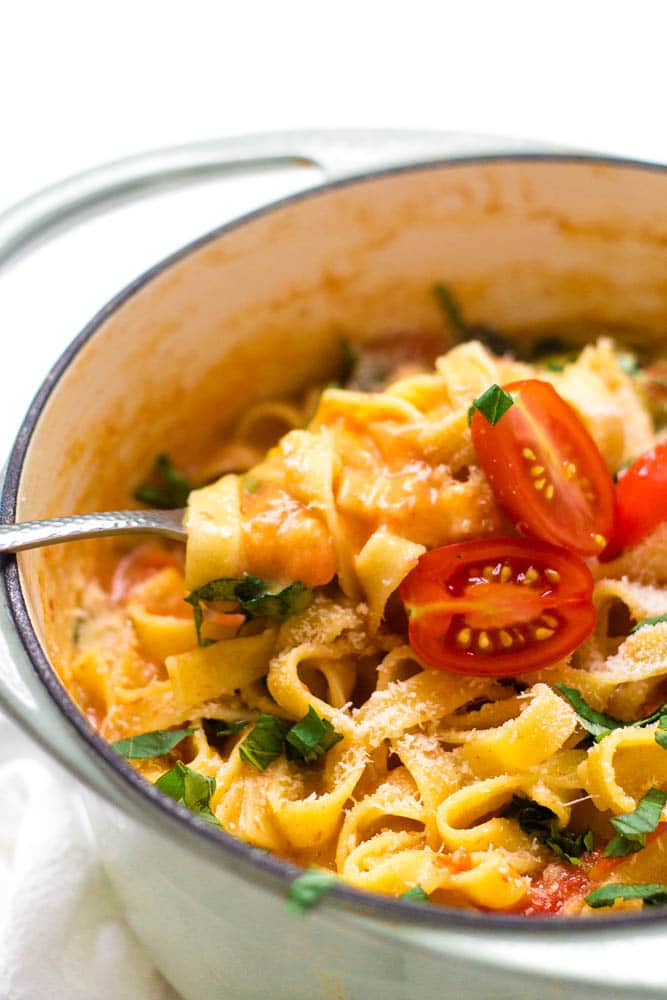
With one pot pastas, you get the starch in the cooking water that emulsifies and makes a creamy sauce out of whatever else is cooking in there.
So here we get a creamy tomato sauce as our base, and I’m going ahead and adding an entire wedge (eek) of parmesan style cheese to form a parma rosa sauce.
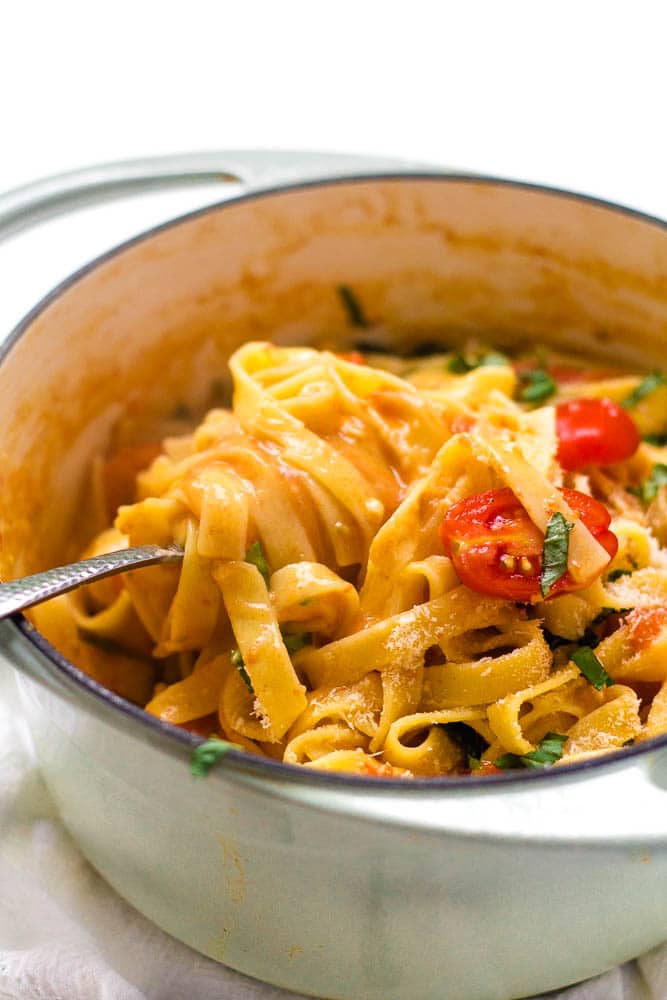
See how creamy? This is just the tomatoes, cooking water and cheese at play. No actual cream, in fact.
It’s an Easy Parma Rosa Sauce From Scratch
Parma rosa, for the uninitiated, is just a pink creamy tomato “rosa” sauce with the addition of parmesan. Absolute crowd pleaser.
Find me one person who doesn’t like creamy tomato sauces, and doesn’t also acknowledge that they can be improved by cheese.
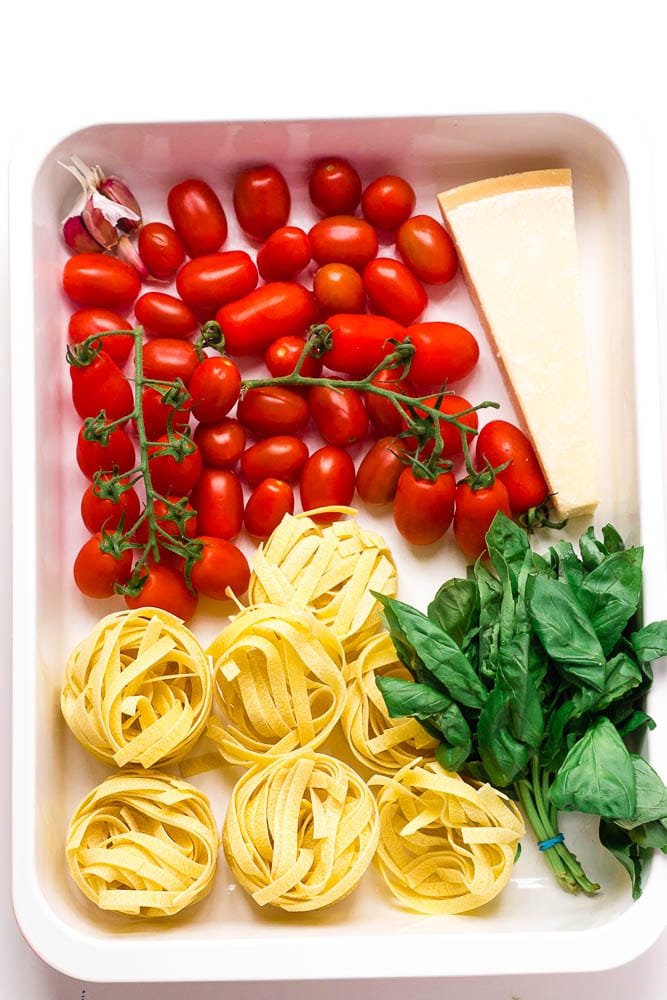
Parma Rosa sauce is commonly found in those powdered mixes, or in the jarred section, and while I can’t pretend this recipe is equally easy, it really isn’t far off.
I think it’s the easiest way you can make it from scratch, and the ingredients list is teeny tiny: cherry tomatoes, garlic, parmesan, basil and pasta.
How to make it – in Pictures
As ever, a full printable recipe card is coming your way, but here’s the visual run through so that you can see how this all works:
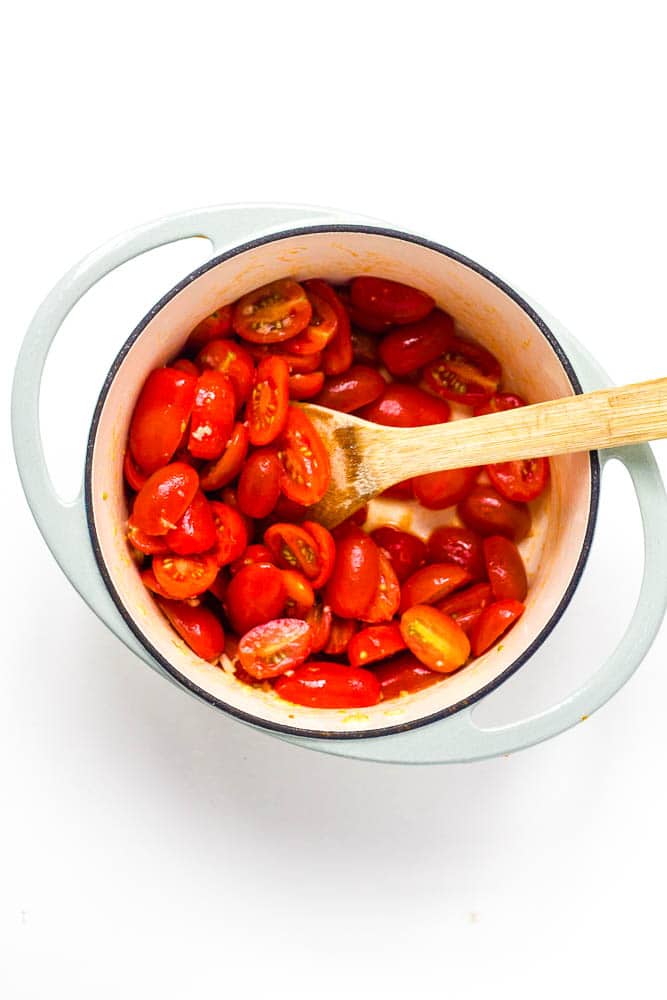
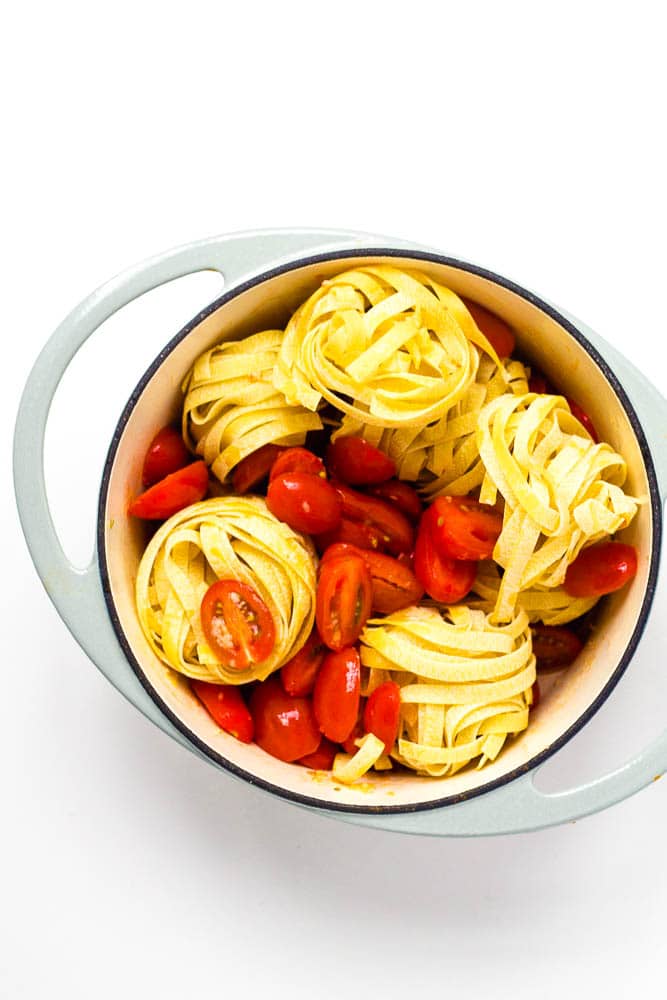
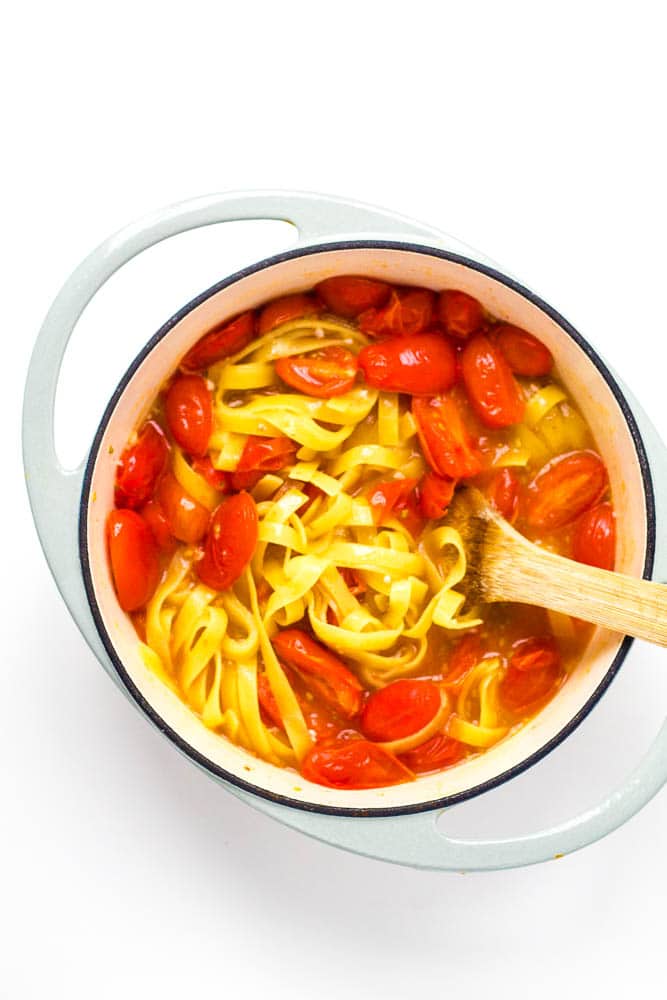
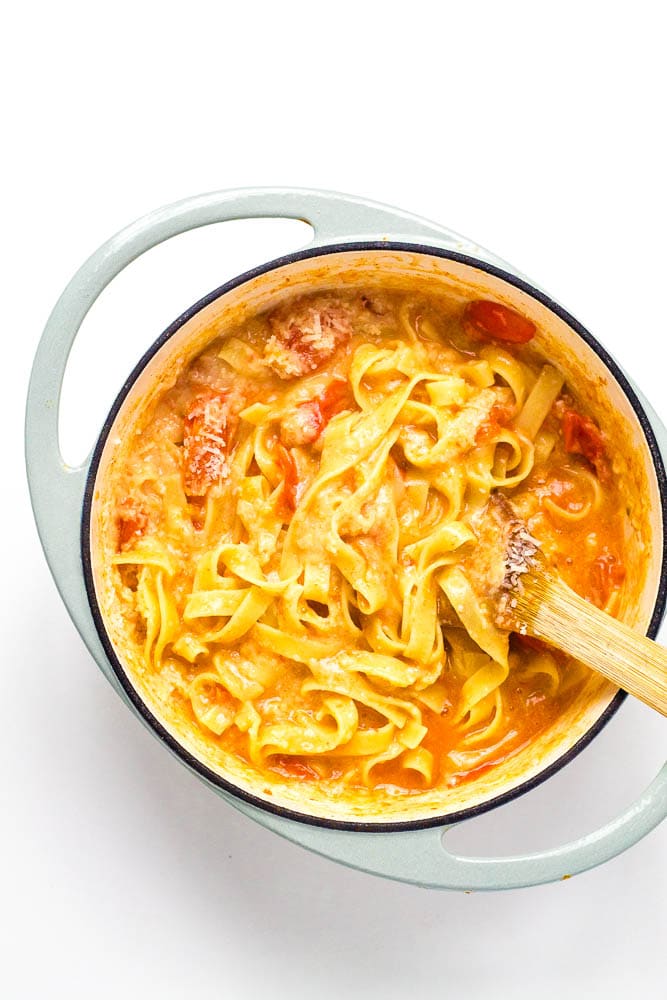
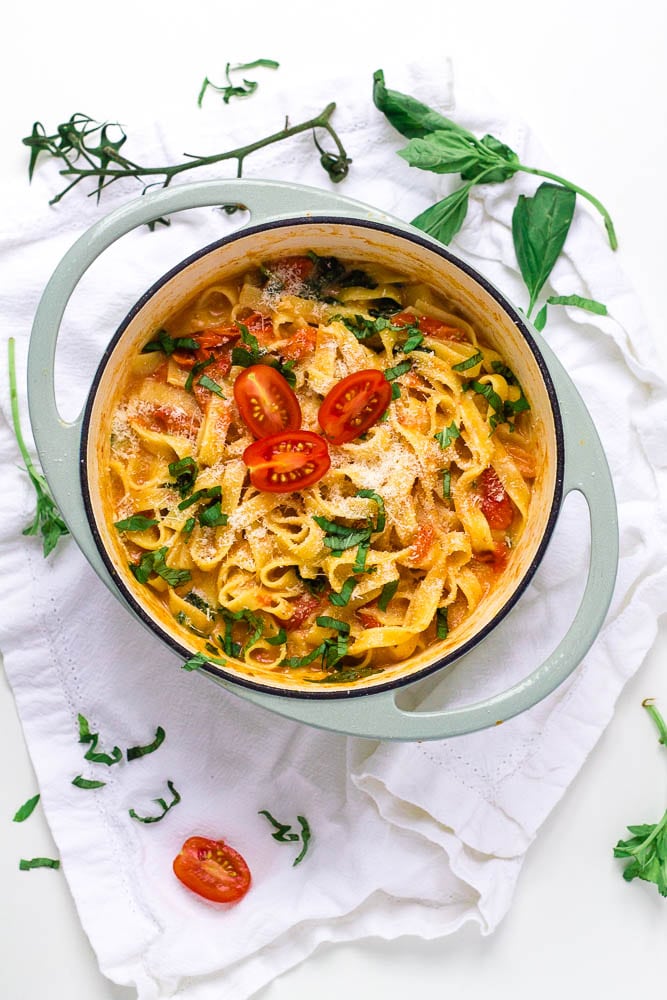
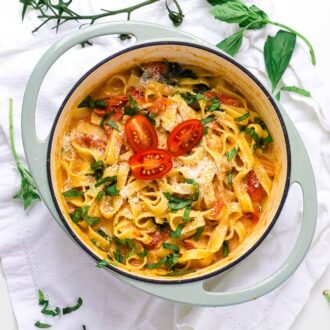
Parma Rosa One Pot Pasta
Ingredients
- 4 cloves garlic, crushed
- 18 oz (500 g) cherry tomatoes, sliced in half
- 10 oz (300 g) tagliatelle nests*
- 7 oz (200 g) parmesan cheese**, grated
- 1 bunch of basil, chopped
Instructions
- First, saute the garlic in a little olive oil or butter over a medium heat. Once fragrant, add the tomatoes to the pan and stir through until they are nicely coated in the garlic.
- Add your tagliatelle to the pan and then pour in 2.5 cups (590ml) of water.
- Bring to a boil, stirring regularly. At first the water won’t incorporate all of the pasta but once the pasta nests start to cook down you’ll be able to get everything into the liquid.
- Simmer for 10-15 minutes, stirring regularly, until the pasta is al dente. You may need to add more water if the pan starts to get too dry before the pasta is ready. This will depend on how thick your pasta is and the shape you use. So keep an eye on things.
- Once the pasta is cooked, turn the heat low and stir in the cheese until it melts and forms a creamy thick sauce. Mix in the chopped basil.
- If the sauce is runnier than you’d like, let it sit covered for 5-10 minutes and it will thicken.
- Serve.

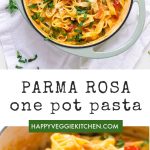
How many ml is 2.5 cups of water – I’m useless at working these things out?
Thanks
590ml and I will update the recipe with this info! I’m sorry, I usually include metric too but overlooked it this time.
I made this the other night and it was absolutely pot licking delectable! Easy prep, had all the ingredients together with the last of the grape tomatoes and basil from the garden, and it came together perfectly! Thank you for this great weeknight meal recipe and your photos are amazingly beautiful and inspiring!
Thank you so much for your kind words, I am so happy to hear that this worked out well for you especially since it used the last of your garden tomatoes – that is a precious thing!
Can this be frozen??
Yes! Just add some extra water when you reheat it 🙂
If I wanted to up the veggies in this, do you think I could wilt some baby greens (spinach,kale, arugula) into it toward the end?
Definitely, just mix them in right at the end, I have done this before and it works great.